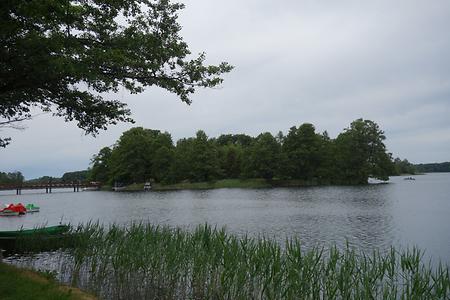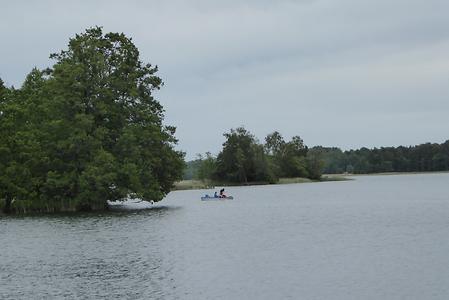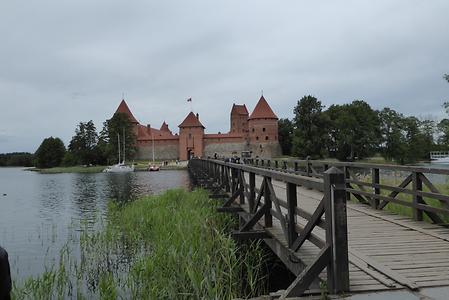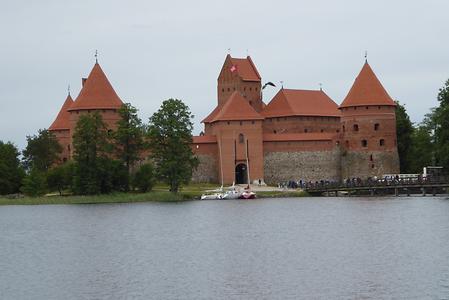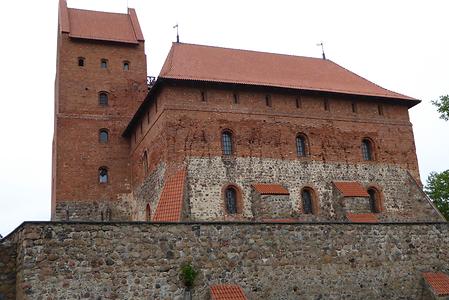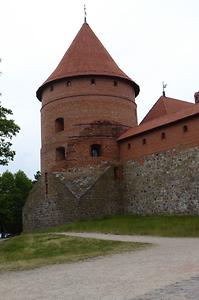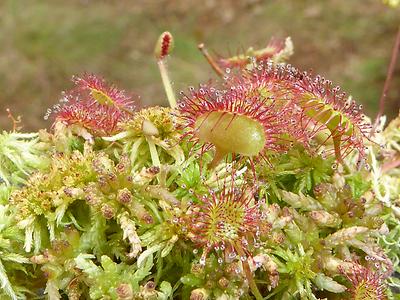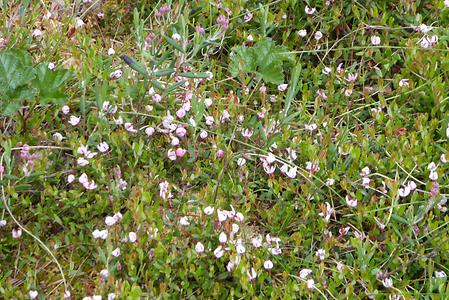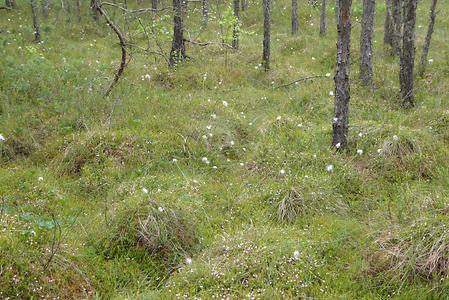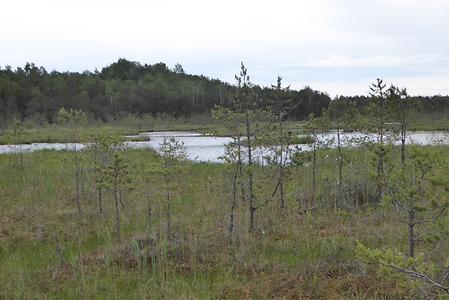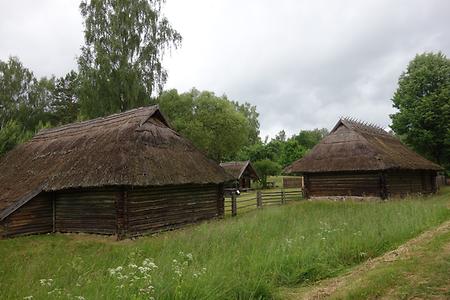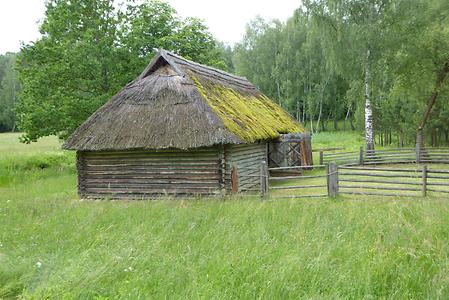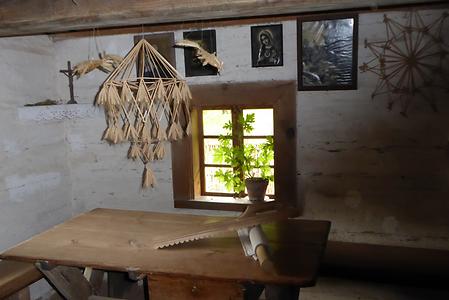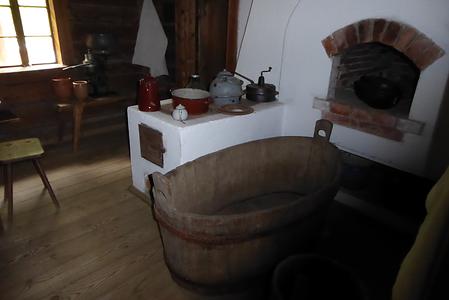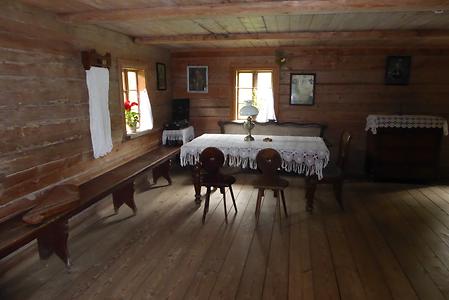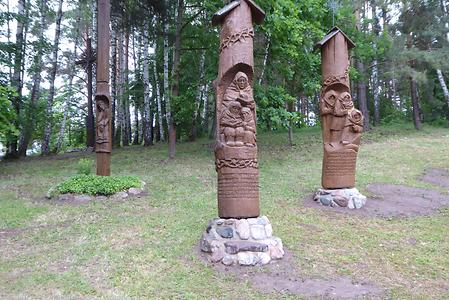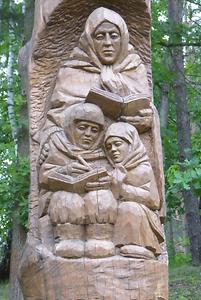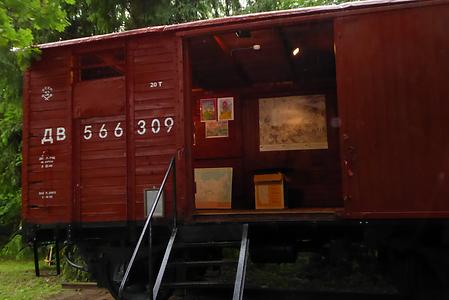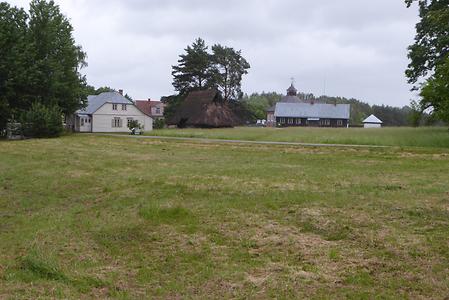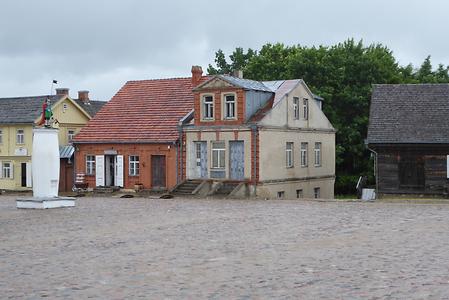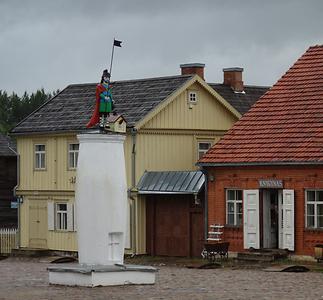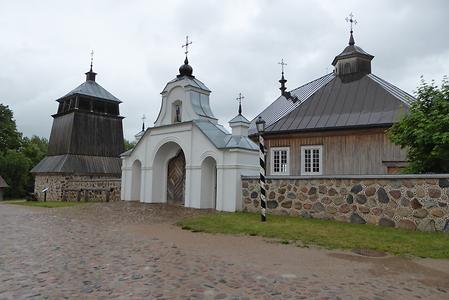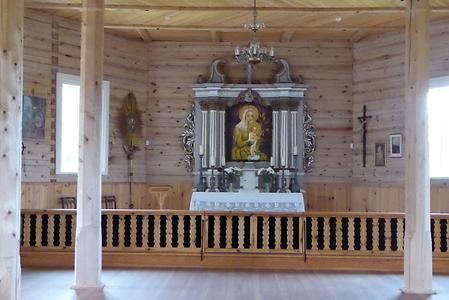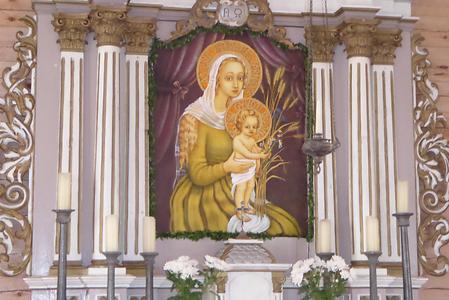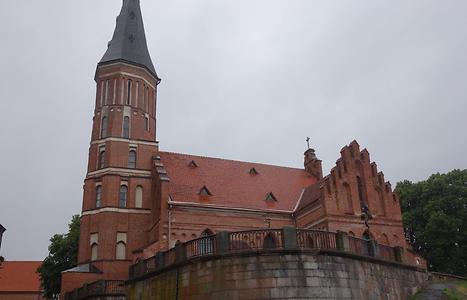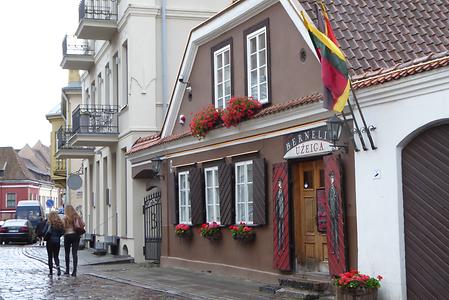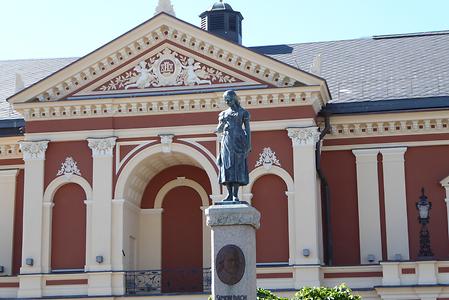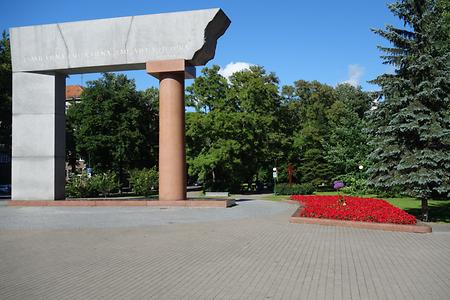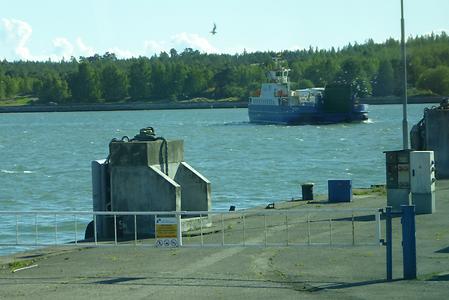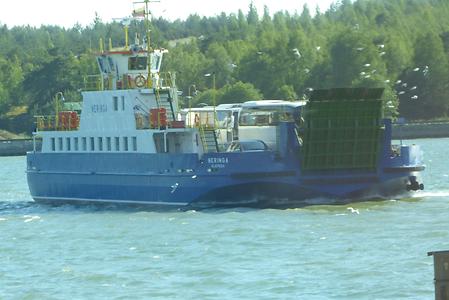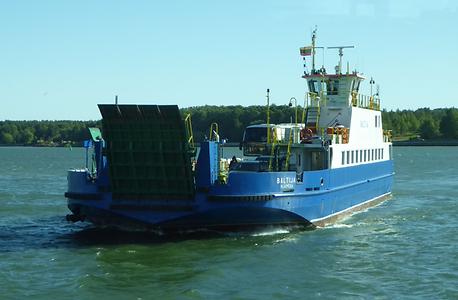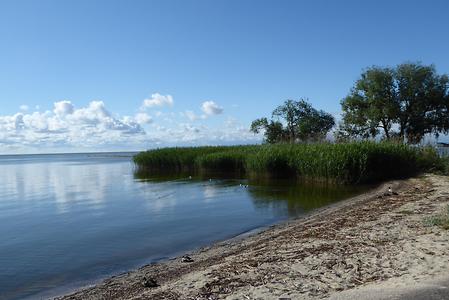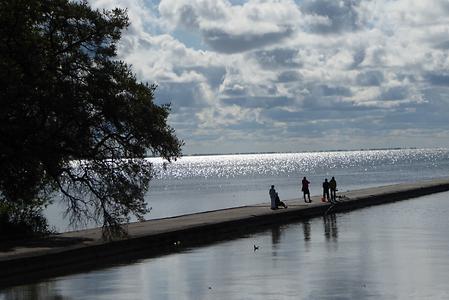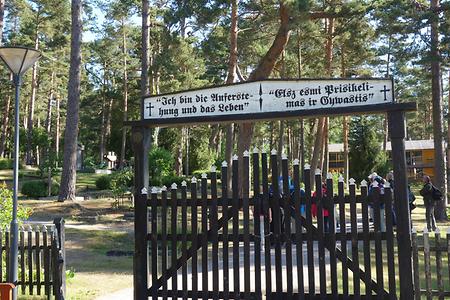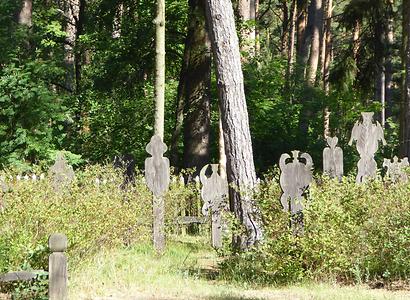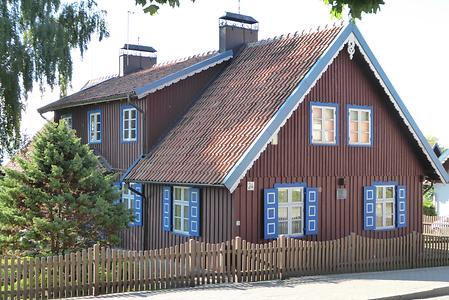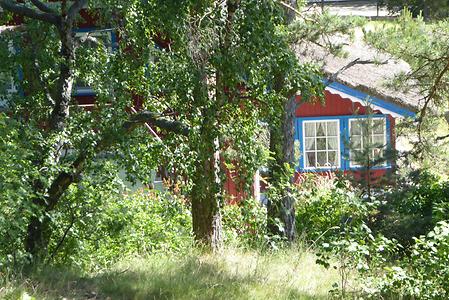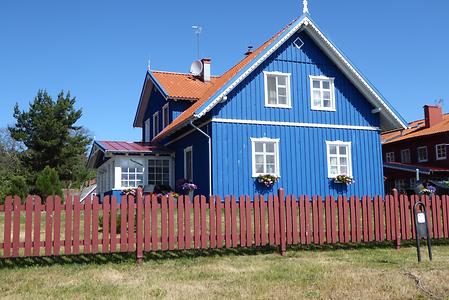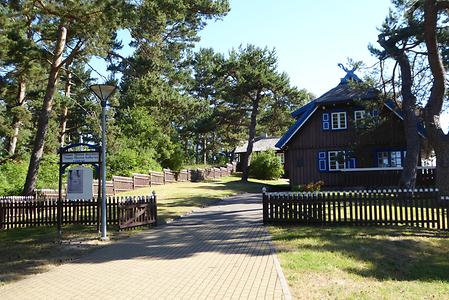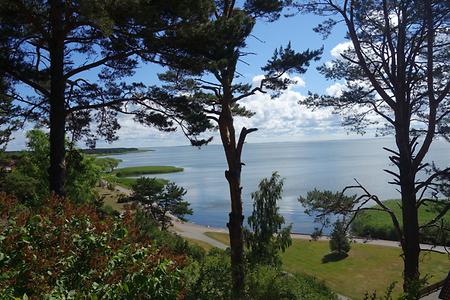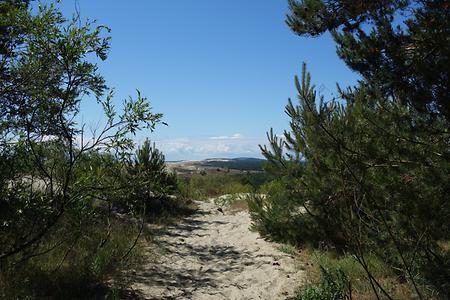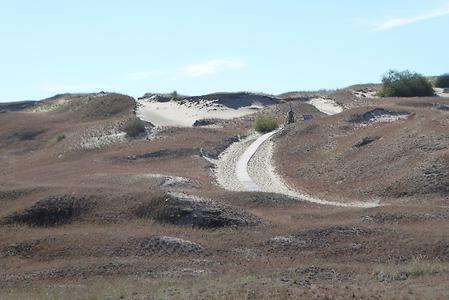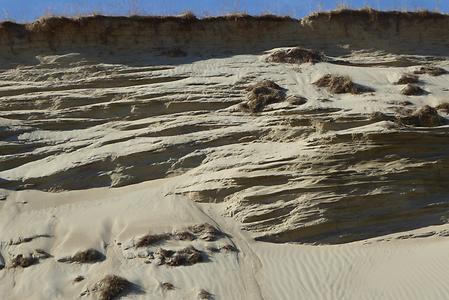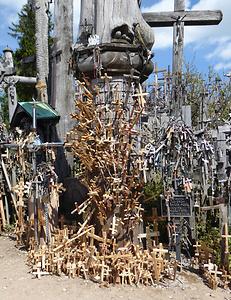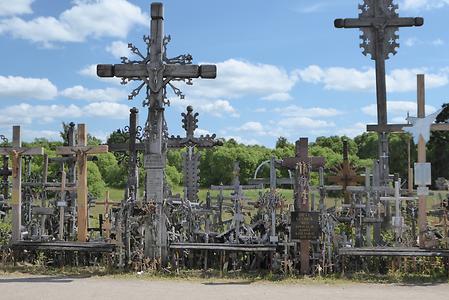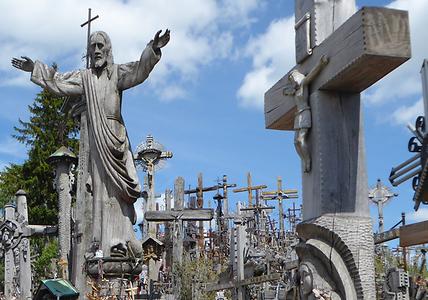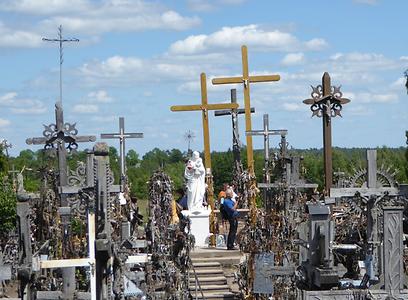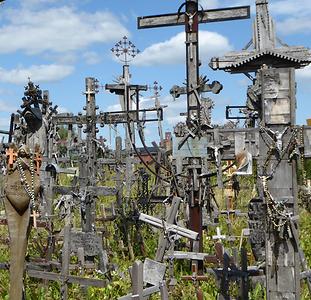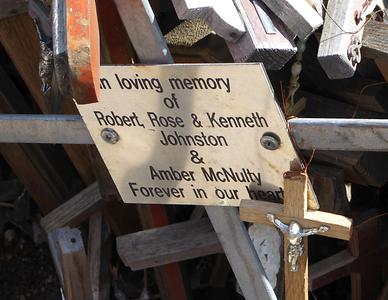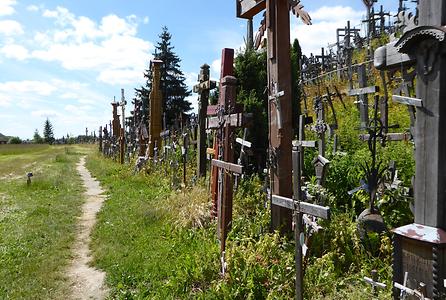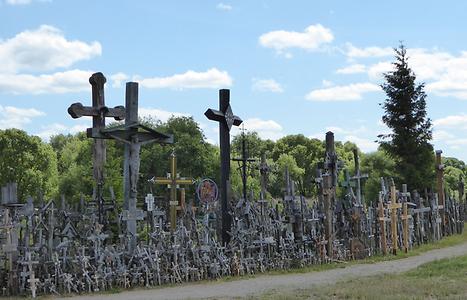Lithuania Part 2#
Part 2 of the description of a trip through Lithuania June 2016#
by Hermann MaurerIntroduction#
Part 1 showed only photos from Vilnius. Part 2 below shows the water castle Traika, the open air museum at Rumsiskes (near Kaunas), a bit of Kaunas and Klaipeda, pictures near Nida on the Curonian Spit ("Kurische Nehrung") and a visit to the mountain of crucifixes near Siauliai, already close to the border of Latvia.Trakei#
Our first stop is on Lake Galve with the famous castle Trakai, some 30 km west of Vilnius. It is located on an island in the lake. The construction of the stone castle was begun in the 14th century by Kęstutis, and around 1409 major works were completed by his son Grand Duke Vytautas the Great, who died in this castle in 1430, without being crowned as King of Lithuania. Trakai was built in a number of stages, and even played a strategic role in part of Lithuenia's history.After visiting Trakai we hike through a nearby nature-park in a substantial swamp-area.
The outdoor museum#
Our trip continues West. A bit outside Kaunas, the second largest city of Lihtuania, there is an outdoor museum that was built near the former village of Rumšiškės. The southern part of the town has disappeaered in the waters of an artificial reservoir. However, the 18th century St. Michael Archangel church of Rumšiškės and some other buildings were saved and restored as main village and special attraction of the outdoor museum when the lake was created in 1958.Near one of the villages is a memorial to the Lithuanians who were deported by the Soviet Union to Northern Siberia in 1941. One can also see the kind of railroad car in which 20 people had to travel for weeks (no water to clean, no toilet, just one hole in bottom of the waggon) to Siberia. Few survived, only a handful made it back, later.
Lena, born 1926 was 15 when she, with 20.000 other persons form Vilinius, was sent on this grueling trip to an island N of the arctic Circle (indeed north of where the river Lena meets the arctic ocean). Few survived: no wood, no real soil, just some fish, 10 months winter. Her mother died, she survived, fled back to her home country. The story of the escape and how she got back to Lithuania is incredible. She keeps telling about it to visitors including the ordeal of the jews in Vilinius when the Germans entered early in WWII.
The main village, part of the former Rumšiškės, with main square and St. Florian protecting the buildings against fire with the reconstructed St. Michael Archangel church are quite impressive.
Kaunas #
Kaunas is the second-largest city in Lithuania and has historically been a leading centre of Lithuanian economic, academic, and cultural life. It is the seat of the Roman Catholic Archdiocese of Kaunas. Kaunas is located at the confluence of the two largest Lithuanian rivers, the Nemunas (German: Memel, as it appeared in the Deutschlandlied) and the Neris, and near the Kaunas Reservoir mentioned above, the largest body of water entirely in Lithuania.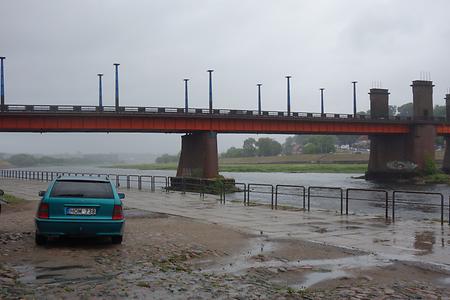
Photo: Hermann Maurer, 2016, under CC BY-SA 3.0
Klaipėda #
Klaipėda (former German name: Memel), is a city in Lithuania on the Baltic Sea coast. It is the third largest city in Lithuania, and the place to cross over to the Curonian spit, this long narrow sand island covered by forests whose norther part belongs to Lithuania, whose southern part to Russia (belonging to the exclave Kaliningrad). Note: Memel (the river) is a “he” the “slow gentle one” not a "she" as she is usually called in German!The history of the city of Klaipeda, like all of Lithuania, is complex: In the 14th century, Lithuania was a huge area extending to Black sea, later it was controlled by successive German states till 1919 (Treaty of Versailles). In the 1923 Klaipėda Revolt it was added to Lithuania and has remained with Lithuania to this day, except for the period between 1939 and 1945 when it returned to the Third Reich following the 1939 German ultimatum to Lithuania, "freed" by Russia towards the end of WWI and independent in 1991, after Boris Jelzin announced independence of Russian states, basically terminating the Soviet union.
For the older german speaking generation it is known because of "Ännchen von Tharau" (Anne of Tharau). This a love poem written around 1600 by a poet Simon Bach. It is a very unusual story. Ännchen was supposed to marry a priest. Whe she and Simon Bach met they (at least he) fell in love, too late to change. When the priest died 11 years later, Ännchen married another priest, (not Simon Bach), and after the second priest died, again she married another priest. This sounds very strange but one has to take into consideration that she had some children by then to take care of, that she needed “security” and it is not even clear that Simon Bach would still have been available at those later stages.
Anyway, the song that starts with (in German):
Ännchen von Tharau ist die mir gefällt
Sie ist mein Leben, mein Gott und mein Geld
Ännchen von Tharau hat wieder ihr Herz
Auf mich gerichtet in Lieb‘ und in Schmerz.
Ännchen von Tharau, mein Reichtum mein Gut,
Du meine Seele, mein Fleisch und mein Blut.
Most German speaking people born before 1970 will still be able to (vaguely) sing this song, but it is a fair bet that most do not know the story of Ännchen, or that she lived and her monument is in Klaipeda (in front of the theater) in Lithuania, see second and third picture!

Photo: Hermann Maurer, 2016, under CC BY-SA 3.0
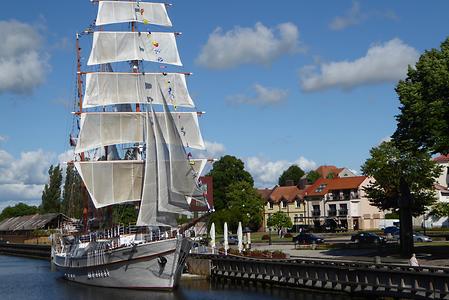
Photo: Hermann Maurer, 2016, under CC BY-SA 3.0
The Baltic history and geography is full of curious stories. E.g., Kaiser Wilhelm and his wife fled from Berlin when Napoleon attacked Prussia in 1807. He first went to Kaliningrad (Köngisberg), but then Napoleon approached further to Memelland (at that time a long part on Curonian spit and on the land it was facing). Napoleon threatened to even capture them there but a special agreement allowed Wilhelm to return to Berlin, after all. Luise (wife of Wilhelm) was very unhappy in the then tiny town of Memel (5.000), although everyone tried hard to please her. A plaque on the modest house she lived in is still a reminder of her sort of "exile".
The next pictures shows a contentious monument that has the following meaning: The solid left part (Memelland) would collapse if the column holding it (Lithuania) would disappear. Also, there is still a bit missing on he right: Kaliningrad. For some time after 1990 attempts were made to “annex” Kaliningrad, the Russian exclave. Geographically speaking this might make some sense. However, efforts in this direction do not continue.
Ferry to Curonian spit#
The next pictures show the ferry transfer to the Curonian spit, first impressions of the area of Nida (just 3 km North of the Russian border on the spit), the Curonian churchyard for the original Curonian people and their decendents with their unusully formed crosses, and a few typical houses.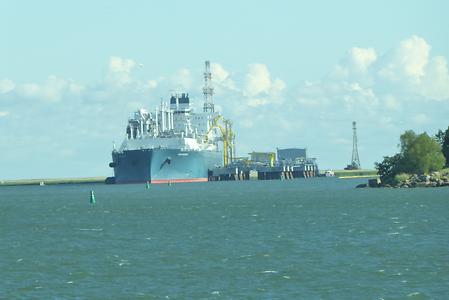
Photo: Hermann Maurer, 2016, under CC BY-SA 3.0

Photo: Hermann Maurer, 2016, under CC BY-SA 3.0
The Curonian spit#
Note that the Curonian spit forms a large body of water between the continent and the Baltic sea. It has a single exit to the Baltic sea quite far North. Russina ships that want to pass from their part of the "lagoon" into the Baltic sea need today a special permit to do so, since they have to navigate through Lithuanian waters. Hence Kaliningrad has, to the North of the city, no direct access to the Baltic sea!The next two pictures show the house of Nobel Prize winner Thomas Mann, and a view from his house to the sea which he has called "the second gulf of Corinth". Thomas Mann won the literature nobelprize in 1930. With part of the money he built a house on the Curonian spit and lived there three summers 1930-1932, writing “Joseph and his brothers”. But when Memelland was annexed by Germany and Kaliningrad (Königsberg) became more and more under the dominance of Nazis and the aggression against not pure-Nazis-thoughts increased, he did not feel safe in Nida any more, returned to Munich and eventually had to leave Germany. He became US cititzen in 1944, a voice long before 1938 against the Nazis. His brother Heinrich, a convinced communist, even lost officicially his German citizenship in the 1930s.
Exploring the dunes around Nida#
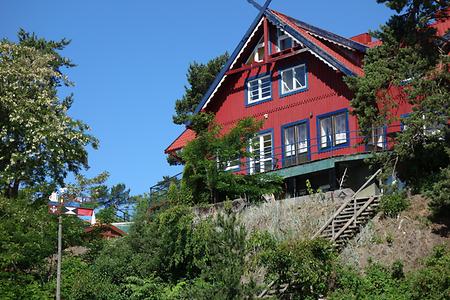
Photo: Hermann Maurer, 2016, under CC BY-SA 3.0

Photo: Hermann Maurer, 2016, under CC BY-SA 3.0
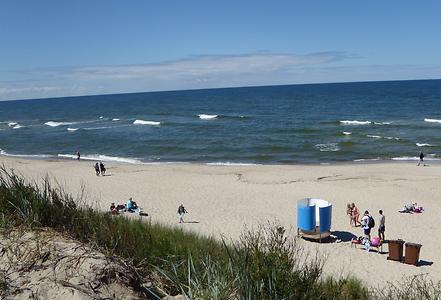
Photo: Hermann Maurer, 2016, under CC BY-SA 3.0
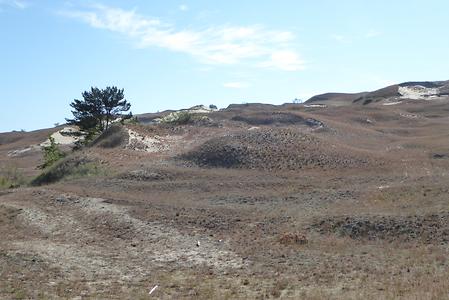
Photo: Hermann Maurer, 2016, under CC BY-SA 3.0
On the way to the "Mountain of crosses"#
The following pictures are from the “Mountain of crosses” near Siauliai, a major city in N Lithuania. Lithuania was always predominantly catholic, even today still close to 80% . Lithuania kept her Catholic identity under the Russian Empire and later under the Soviet Union when some Catholic priests led the resistance against the Communist regime. This is commemorated in the "Mountain of crosses" (“Berg der Kreuze") near Siauliai, once a shrine to the anti-communist resistance, today something between a pilgrimage site and a tourists spectacle.
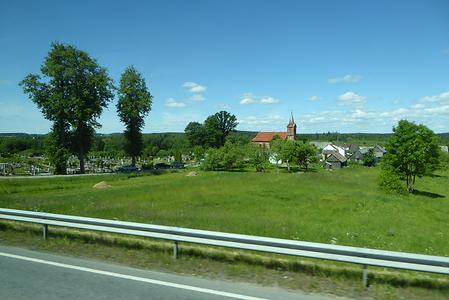
Photo: Hermann Maurer, 2016, under CC BY-SA 3.0
From here it is just an hours drive to Latvia.
